EXPLORATION
9 janvier 2019
Bits Longyear - Sélectionner le bon bit en 5 étapes faciles
Pour le forage de carottes, des foreurs utilisant une plate-forme à la direction du bureau, les personnes travaillant dans l'industrie du forage et de l'exploitation minière se soucient de deux choses:
1. Ramener les individus à la maison en toute sécurité
2. La quantité de noyau dans la boîte
Lorsque le foret de droite est dans le bon sol et opère dans les bonnes conditions, plus de carottes finissent dans la boîte à la fin du quart de travail. Il n’existe pas de matrice ou de géométrie de foret parfaite qui coupe tous les terrains aussi rapidement que possible. Un foret Longyear peut couper 17 pouces par minute en Arizona, mais seulement trois pouces par minute en Ontario.
Bien que la sélection des forets au diamant intervienne souvent après coup, il est tout aussi important que les foreurs décident de la quantité d'eau / de boue à exécuter ou de la vitesse de rotation des tiges.
Bien que la sélection des forets au diamant intervienne souvent après coup, il est tout aussi important que les foreurs décident de la quantité d'eau / de boue à exécuter ou de la vitesse de rotation des tiges.
Étape 1: Identifier l'objectif principal
De nombreux facteurs doivent être pris en compte lors de la sélection d'un foret, notamment l'objectif principal d'un projet. Comme mentionné, l'objectif global est toujours plus fondamental dans l'encadré, mais il y a d'autres éléments à prendre en compte. Par exemple, un trajet en tringle prend beaucoup moins de temps à 400 pieds qu'un trajet en tringle à 4 000 pieds. Bien que la vie soit un peu importante, elle est moins cruciale au sommet d’un trou car c’est généralement sacrifier les taux de pénétration.
En Australie, un site utilisait deux bits différents à des profondeurs différentes. Un foret Longyear Red Express a été utilisé pour couper 60 centimètres par mètre avec une durée de vie de seulement 120 mètres au sommet du trou. Une fois ce travail terminé, ils sont passés à Longyear Yellow Stage 3, car le déclenchement de la tige prenait trop de temps. Avec ce trépan, ils ne coupaient qu’à 35 centimètres par minute, mais atteignaient une vie de 300 mètres par trépan. Utilisant un bit Longyear singulier, ce site met 6% plus de noyau dans la boîte que ce qu’il a fait avec un bit concurrent. Cependant, en utilisant ces deux bits Longyear en tandem, ils ont constaté une augmentation de 23% du noyau dans la boîte par rapport au produit du concurrent. Parfois, il est plus avantageux de couper plus rapidement, même si cela signifie plus de trébuchement.
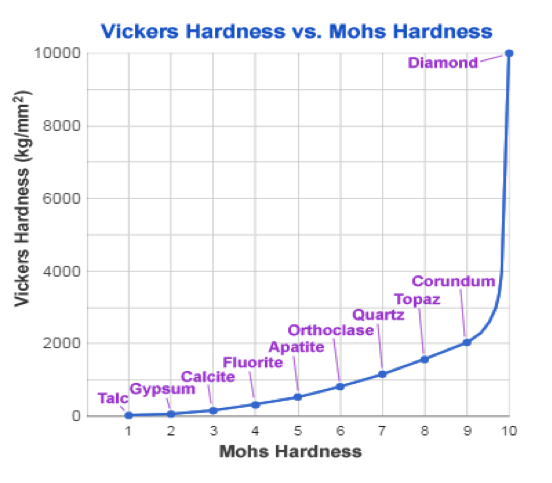
Étape 2: Déterminer la dureté du sol
Une fois que le foreur décide si l’objectif est de couper plus vite ou moins souvent, il est ensuite important d’établir à quel point le sol est difficile à couper. Contrairement à la croyance populaire, les forages au sol ne sont (probablement) pas les terrains les plus durs au monde. C’est là que l’échelle de Mohs entre en jeu. L'échelle de Mohs est une échelle exponentielle de 1 à 10 permettant de quantifier la dureté des minéraux. Les minéraux ayant une dureté Mohs plus élevée grattent tout ce qui a une dureté Mohs inférieure. Par exemple, un minéral classé comme quatre égratignera un trois mais pas un cinq.
Tous les bits offerts sur le marché aujourd'hui visent une gamme spécifique de l'échelle de Mohs pour la meilleure performance. Pour déterminer la dureté Mohs de la roche à forer, un kit de test de résistance à la rayure de Mohs est nécessaire. Ce kit est une série de pioches en différents matériaux qui, utilisés correctement, peuvent déterminer la dureté de Mohs de plus ou moins 0,5.
Le kit de test de rayures Boart Longyear comprend quatre grattoirs avec huit pointes remplaçables et une pierre à aiguiser. Si la pointe numérotée gratte la roche, la roche est plus douce que le numéro sur la pointe. Si sept égratignures et six ne le sont pas, vous savez que vous êtes dans 6.5 rock. Vous sélectionneriez alors le bit créé pour ce rocher.
Étape 3: Sélectionnez le bit de couleur
Une fois la dureté du sol identifiée, Boart Longyear propose une Tableau de comparaison et d'évaluation de la dureté Diamond Bits de Longyear pour trouver un peu recommandé pour ce terrain. Par exemple, le violet s’applique à 1 - 4,5 roches, jusqu’au rouge qui convient le mieux à 7,5 - 9. Le violet couvre numériquement une plage aussi large parce que l’échelle de Mohs est exponentielle (1 et 4,5 de ”Dureté que 7.5 et 9).
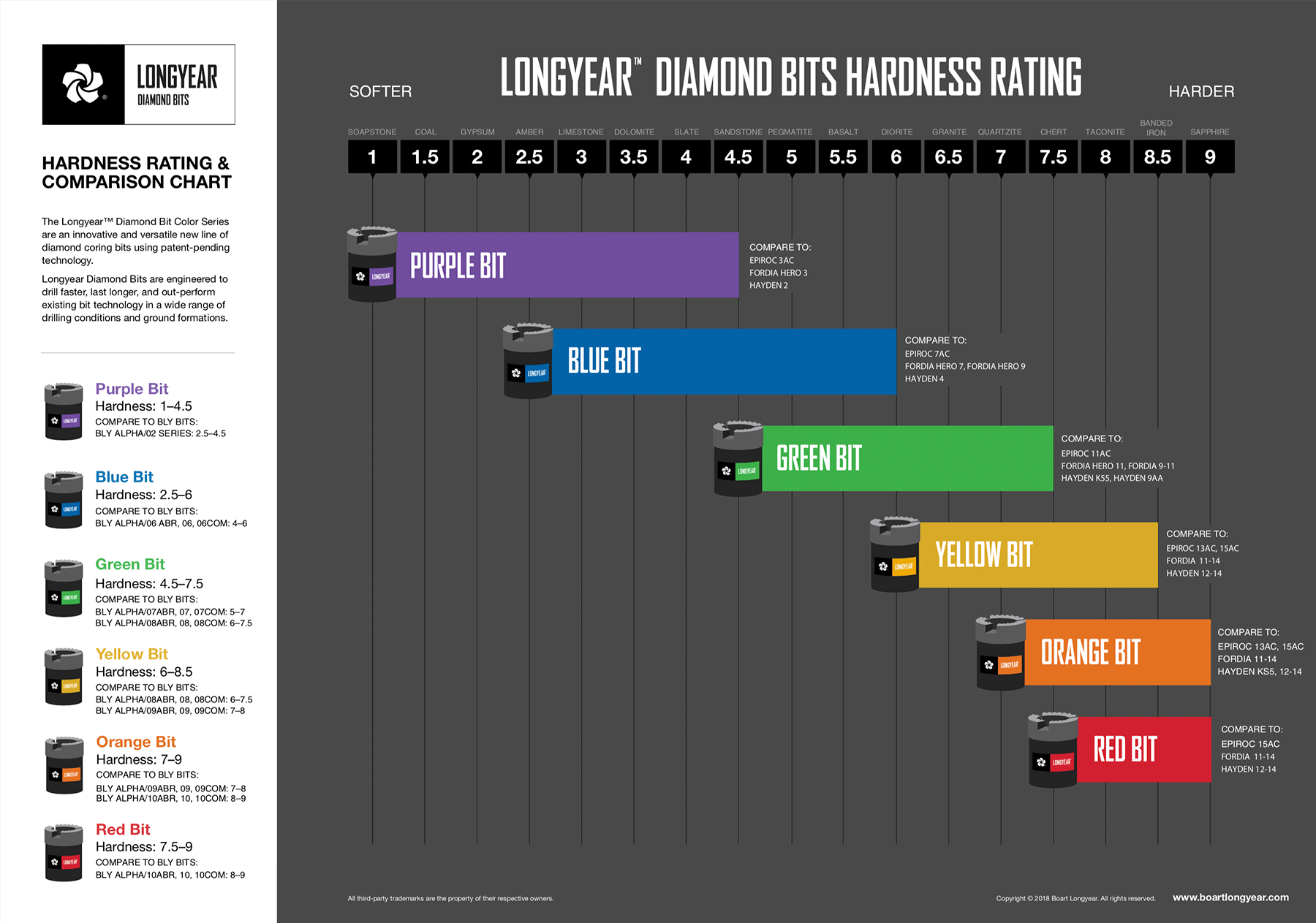
Dans la référence croisée ci-dessus, la plage de bits se chevauche et les barres représentant chaque foret sont assez longues. C’est là que les objectifs du site entrent en jeu. Par exemple, si vous êtes dans une pierre 6.5, sélectionnez un bit vert ou un bit jaune. Lequel devriez-vous essayer en premier? Ça dépend. Si le site coupe beaucoup de trous courts et que la durée de vie est minime, vous auriez probablement la meilleure chance avec Yellow - il pénétrerait plus rapidement que Green, mais sa durée de vie serait inférieure à celle de la pierre 6.5. D'un autre côté, si la vie du trépan est un sujet de préoccupation parce que vous percez des trous profonds, vous préférerez peut-être le vert.
Une autre chose à considérer pour la sélection de bits est la géométrie. Alors que le foret vert est généralement plus résistant que le jaune, un foret vert avec une surface plus ouverte et un jaune avec une surface moins ouverte présenteront des caractéristiques de coupe très similaires.
Étape 4: Sélectionnez la géométrie correcte
Les géométries proposées par Boart Longyear sont toutes conçues pour couper un peu différemment. Dans chaque barre de couleur, l'Express a la capacité de couper des rochers plus durs que la scène et la scène coupera des rochers plus durs que le Tapered Waterway. Ceci est le résultat de ce qu'on appelle "zone ouverte".
La surface ouverte est déterminée en recherchant la surface d'un disque ayant le même diamètre extérieur et le même diamètre intérieur que le foret et en soustrayant la surface du foret après avoir coupé tous les cours d'eau. Il ne reste que la surface des cours d'eau, flûtes et rondes, et le pourcentage de ce nombre par rapport à la surface du disque total est la surface ouverte. Express a une aire ouverte de 30%, Tapered Waterway a une aire ouverte de 25% et Stage a une aire ouverte de 20%.
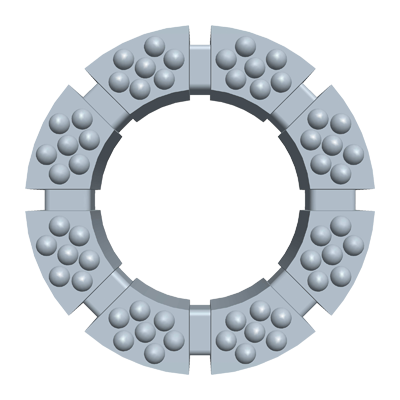
Voies d'eau standard
• Style de voie navigable le plus courant
• Durée de vie la plus longue basée sur la plus faible surface ouverte 15%
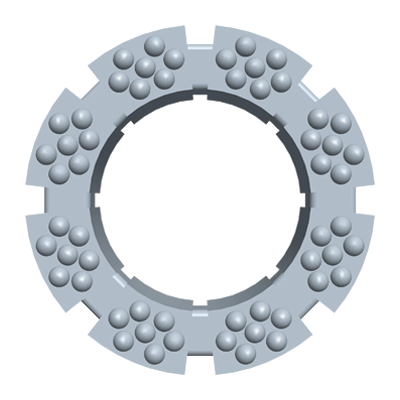
Voies navigables coniques
• Pousse les boutures vers le diamètre extérieur et réduit la pression sur la face de la fraise
• Aire ouverte 25%
• Préféré
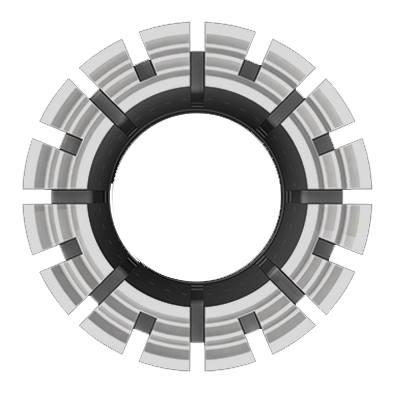
Voies Express
• Pénétration plus rapide et / ou poids réduit
• Aire ouverte 30%
• Formules de coupe libre
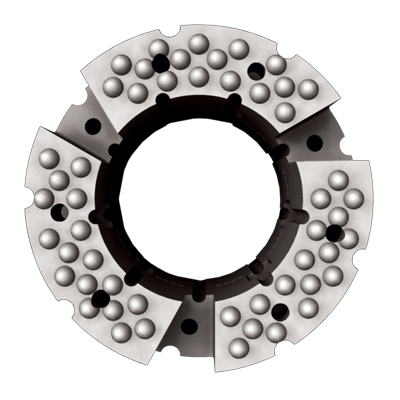
Stage / GT
• voies navigables larges, plus polyvalent
• Meilleur rinçage et pénétration que les voies d'eau standard
• Aire ouverte 20% pour la scène
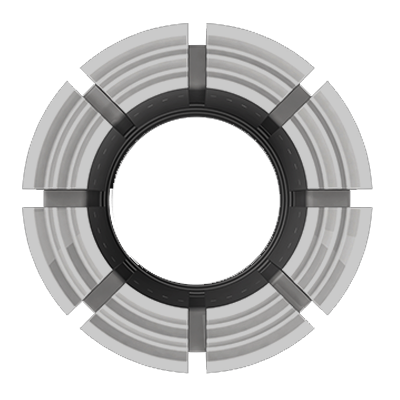
Voies navigables profondes
• Recommandé pour les applications avec perte de circulation; empêche le boîtier de levage de rentrer dans le foret et de couper l'eau
• Peut être utilisé à la place de la décharge faciale dans un carter de levage à trois tubes et à noyau piloté
• Débit facial préféré pour la récupération du noyau. Zone ouverte basée sur la voie navigable
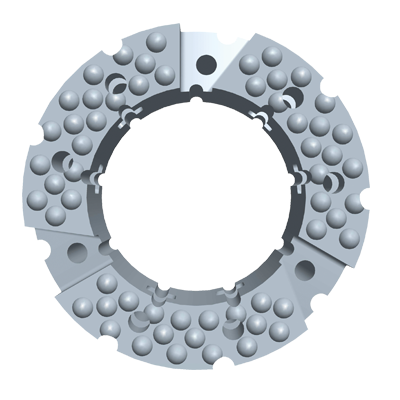
Drainage du visage
• Réduit la pression d’eau sur le noyau et redirige le fluide vers l’avant du foret (réduit le lavage du matériau du noyau), facilitant ainsi la récupération du noyau
• Requis pour les boîtiers de levage à noyau pilotés
• Zone ouverte basée sur la voie navigable
Si vous coupez dans la plage supérieure de ces barres, une zone plus dégagée sera nécessaire et Express, pour les gammes moyenne et inférieure, utilisera respectivement la voie navigable conique ou la scène.
Les bits Longyear Yellow et Longyear Green se chevauchent sensiblement dans le renvoi. Cela montre que le Longyear Yellow ou le Longyear Green peut couper le rocher Mohs 7. Pour couper ce Mohs 7 rapidement, un bit de voie navigable conique jaune sera nécessaire. Pour couper plus lentement et optimiser la durée de vie du bit, un bit Green Stage doit être utilisé. Un Green Express, une voie navigable verte et un stade jaune atterriraient quelque part entre les deux.
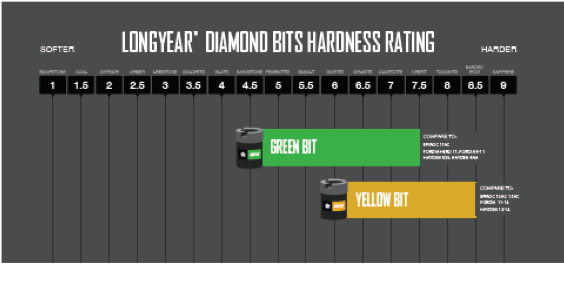
Une fois qu'un bit a été sélectionné pour le type de roche, la hauteur de la couronne et la géométrie, la dernière étape consiste à collecter des données et à tester les performances du bit choisi.
Étape 5: Testez le bit sélectionné
Une fois que le bit idéal a été identifié - il doit être testé, et le seul moyen de prendre une décision éclairée lors du test est de collecter des données.
Voici trois points de données obligatoires à collecter:
• Taux de pénétration à chaque passage
• Dureté Mohs à chaque passage
• peu de vie de chaque bit
Une fois les données collectées, ces informations peuvent être utilisées pour valider le choix initialement fait ou s’adapter en fonction de circonstances non comptabilisées. Par exemple, si le bit Green Stage était sélectionné mais que le taux de pénétration n'était pas aussi élevé que prévu, alors le Green Express et le Yellow Stage seraient de bons bits à essayer ensuite. La scène jaune ne fournit peut-être pas la durée de vie souhaitée, mais le Green Express peut constituer un entre-deux parfait. Tout cela montre dans les données et à la fin de la journée, plus de noyau finit dans la boîte.
Avec une combinaison de connaissances, d'outils appropriés et d'une bonne planification, chaque quart de travail peut être optimisé et, par la suite, mis autant que possible dans la boîte.
En savoir plus sur l’optimisation des bits et les résultats de productivité sur le terrain - Les nouveaux embouts Longyear ™ mettent 23% de noyau en plus dans la boîte
Prêt à commencer les tests? Contactez votre représentant local Boart Longyear ou visitez notre site. Mon magasin de forage.
TÉLÉCHARGER LE FICHIER PDF
Téléchargez le synopsis de cet article ainsi qu'un exemple de journal de test et commencez dès aujourd'hui à optimiser les performances de votre bit.
TÉLÉCHARGER
[pardot-form height="770" id="4789" title="Download the Longyear Bits 5 Easy Steps and Testing Log PDF"]



